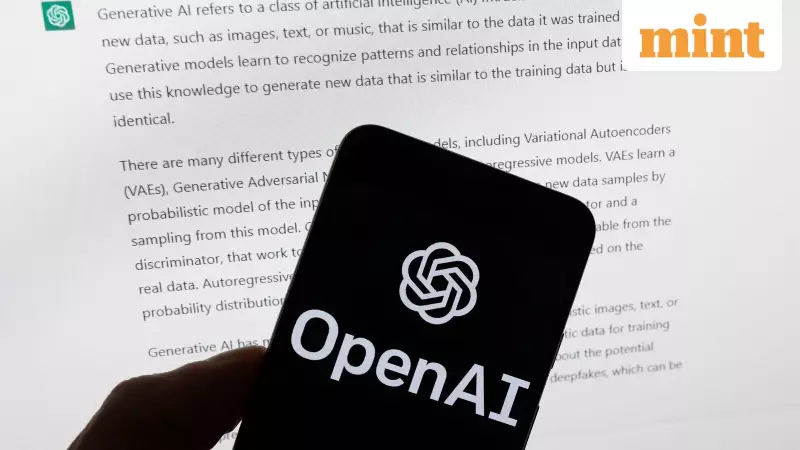
American Tech Giants Bet Big on India's AI Revolution
The artificial intelligence landscape in India is experiencing an unprecedented surge, with global technology leaders making massive investments to capture what many consider the world's most promising AI market. According to recent reports, India has rapidly become the second-largest market for OpenAI, the company behind the revolutionary ChatGPT, and could soon claim the top position globally.
Major Players Enter the Indian AI Arena
Sam Altman, co-founder of OpenAI, has expressed remarkable optimism about India's AI adoption, describing it as "unmatched anywhere in the world." The company has demonstrated its commitment through concrete actions: launching a cheaper version of ChatGPT specifically for Indian users in August, planning to open an office in New Delhi later this year, and considering the establishment of a massive data center in the country. Altman himself is scheduled to visit India at the end of November, where he may unveil further expansion plans.
Other technology behemoths are equally enthusiastic about India's potential. Microsoft, which holds significant investments in OpenAI, has pledged to spend $3 billion over the next few years to expand its AI infrastructure across India. In a strategic move during August, both Google and Meta announced partnerships with Reliance Industries, the conglomerate led by India's wealthiest individual Mukesh Ambani, focusing on building data centers and promoting AI adoption among Indian businesses.
Perhaps the most aggressive market entry came from Perplexity, an AI startup challenging Google's search dominance. In July, the company partnered with Bharti Airtel, one of India's largest telecommunications providers, to offer its AI service free for one year to all 360 million Airtel customers. This bold strategy yielded immediate results, with Sensor Tower data showing Perplexity downloads in India skyrocketing by almost 800% month-over-month following the Airtel partnership, dramatically outpacing ChatGPT's 39% and Gemini's 6% growth rates.
Why India Represents the Ultimate AI Prize
India's appeal to AI companies stems from several compelling factors. The country boasts approximately 900 million internet users, second only to China globally. However, unlike China's restricted market, India remains open to American technology firms. Google's Android operating system powers over 90% of smartphones in India, while Meta's WhatsApp counts more than 500 million active users. The e-commerce sector is dominated by American giants Walmart-owned Flipkart and Amazon.
Venugopal Garre from research firm Bernstein highlights that technology companies succeeding in India can achieve user growth at a scale and speed unmatched by most other markets. The country's diverse and extensive internet user base provides an ideal testing ground for new AI products and offers invaluable opportunities to observe usage patterns at massive scale.
Indian users have already demonstrated unique behavioral patterns, showing a strong preference for voice interactions with AI models rather than text-based queries. This tendency likely reflects the reality that many Indian internet users cannot read or write, presenting both a challenge and an opportunity for AI developers to create more inclusive technologies.
The Data Gold Rush and Economic Challenges
For AI companies, India represents more than just a vast market—it's a crucial source of fresh training data. As most large public datasets have already been extensively utilized, Indian users provide a valuable new stream of diverse information. The country's robust digital infrastructure, known as the "India Stack," has brought hundreds of millions of previously excluded individuals online through state-led initiatives including biometric identification and digital payment systems.
Konark Bhandari of the Carnegie Endowment for International Peace notes that India's regulatory environment facilitates this data collection, with no restrictions preventing companies from transferring data across borders or using Indian data to train models overseas.
However, profitability remains a significant challenge. Most technology companies charge substantially less in India than in other markets. Netflix, for instance, costs as little as $1.69 monthly in India compared to $7.99 in the United States. AI services face additional cost pressures, with processing expenses currently around $0.07 per million tokens, regardless of whether the user is in Bangalore or the Bay Area.
Dmitry Shevelenko, Perplexity's chief business officer, acknowledges that providing free service for a year is costly but necessary to prove value and convert users to paying customers. He predicts India will become a compelling subscriptions market within five years, though this remains uncertain given the country's historical pattern of having vast user bases but relatively few paying customers.
Potential Impacts and Future Directions
While Indian consumers generally welcome foreign AI companies, concerns persist about the long-term implications. Some experts worry about dependence on American platforms and potential negative effects on India's domestic IT services industry. The anxiety has intensified since former President Donald Trump imposed steep tariffs on India.
Mr. Garre warns that well-funded American companies with superior infrastructure could potentially stifle India's AI prospects by discouraging investment in local startups. This scenario could mirror previous technological revolutions where Indian companies settled for peripheral services while American firms built the core platforms.
Despite having one of the world's largest developer communities, India currently has relatively few AI researchers. Sam Altman offers a more optimistic vision, suggesting India can become one of the leaders of the AI revolution. The critical question remains whether India will dominate through its massive user base alone or through creating its own groundbreaking technology.





